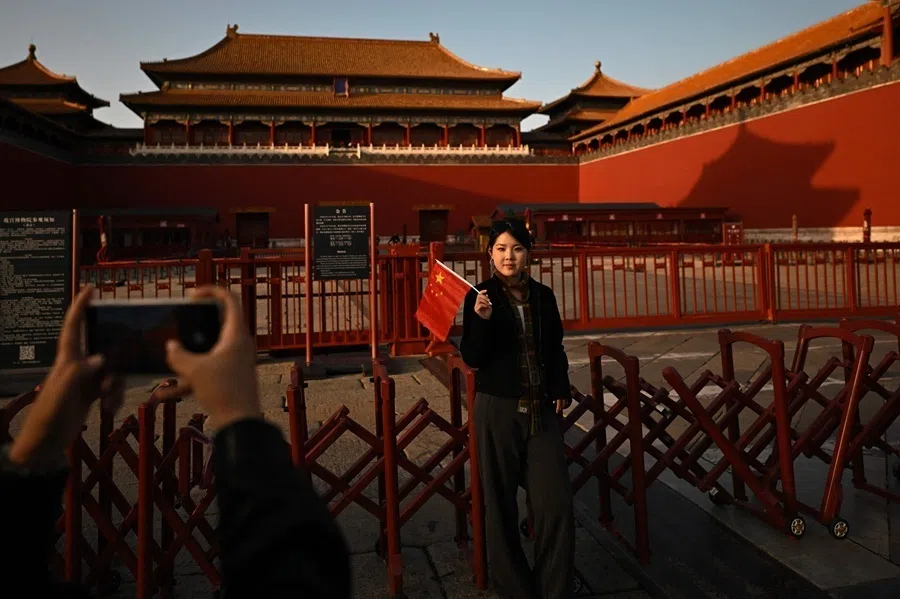Why the BRI needs global private investors
There are numerous obstacles to overcome but China needs to get global private investors to come onboard its massive BRI projects. Professor Gu Qingyang opines on China's possible approach and strategy in this third part of his series on the BRI.

A country's infrastructure is a public asset and thus cannot be best provided for by the private sector. The government and public capital must play the key leading role, but this does not mean that reliance on government and state-owned enterprises alone will produce satisfactory results.
In the initial years of the BRI, some construction projects led by the Chinese government and state-owned enterprises invited criticism, due in part to the lack of diversity in the sources of investment.
Infrastructure development requires a huge outlay of funds, which can expose the limitations of government resources, even for China. The main challenge, however, lies in the public sector's inefficiency rather than in the lack of government funding. Unlike private enterprises, state-owned enterprises often do not face hard budget constraints. In addition, because the Belt and Road Initiative (BRI) infrastructure projects are largely driven by political factors, economic efficiency often becomes a secondary objective.
Since BRI projects also involve national interests and international geopolitical competition, exclusive investment from the Chinese government and state-owned enterprises will be questioned, especially when the projects encounter difficulties. In the initial years of the BRI, some construction projects led by the Chinese government and state-owned enterprises invited criticism, due in part to the lack of diversity in the sources of investment.

One solution is the introduction of private capital investment, especially through global private capital and the participation of multinational companies, which will bring in more capital to alleviate funding shortages and ensure that project selection is more responsive to market demand and aligned with the cost-benefit relationship. When public and private capital are combined in public-private partnerships (PPP), the overall project capital increases and the project's operability improves, leading to enhanced economic efficiency.
At the same time, participation from the private sector introduces new technology and advanced management experience to the projects. With years of experience in the global market, many multinational companies have acquired a wealth of experience in cross-border and cross-cultural management, which will help the BRI build top quality infrastructure as it adopts global best practices.
The most prominent, tenacious risks include non-traditional issues such as international and geopolitical conflicts, terrorist threats, environmental and social risks, and uncertainties growing out of political instability.
Through participation of private enterprises from all around the world and the benefits they bring to the table, the BRI will become more inclusive, and this shared global ownership will gain wider acceptance for the initiative. Through this platform, companies from China and other countries can learn from each other how best to improve their international operations.
Private capital is significant to the project, but an Asian Development Bank report indicates that only 0.8% of the USD 50 trillion in private capital managed by global pension funds, sovereign wealth funds, insurance companies, and other institutional investors is spent on infrastructure. Although the level of savings in Asia is high, there are still considerable obstacles blocking the channelling of private capital investment into infrastructure funds for BRI projects.
Infrastructure projects have significant positive externalities and spillover effects, but their financial return does not fully reflect positive outcomes such as industrial development, urbanisation, and poverty alleviation.
The issue is multifaceted. The most immediate challenge is that most BRI projects are located in developing countries where risks are relatively high. Elevated risks have long prevented developing countries from receiving effective external investment, creating a vicious circle. The most prominent, tenacious risks include non-traditional issues such as international and geopolitical conflicts, terrorist threats, environmental and social risks, and uncertainties growing out of political instability. To attract private investment, it is critical that these risks be addressed through international cooperation and coordination, supported by guarantee mechanisms to mitigate the various risks involved.
Since the return on investment in infrastructure is generally only seen many years later, the flexibility of entry and exit strategies for private investment is an important consideration. It is necessary to effectively segment a construction project and tailor different financing instruments, such as asset securitisation through REITs, for different investment cycles. These require corresponding financial innovation to help private investors manage risks.
The participation of multilateral development banks in the BRI projects is likewise essential for attracting private investors.
The lower financial return on infrastructure projects presents another major obstacle to attracting private investment. Infrastructure projects have significant positive externalities and spillover effects, but their financial return does not fully reflect positive outcomes such as industrial development, urbanisation, and poverty alleviation. It is worth exploring ways to measure these broad spillover effects as a basis for formulating effective incentives for private investment.
One spillover effect is the increased taxation levied by the government as a result of economic development brought about by infrastructure projects. It would be reasonable, then, to use a portion of the increased tax revenue to provide risk guarantees for private investment or additional investment subsidies, which are highly effective institutional arrangements that encourage private investment. Instead of fully investing limited public capital in projects, the focus should be on using it as a leverage to unlock and maximise private investment. China's Silk Road Fund, various policy banks, and the Asian Infrastructure Investment Bank should play this critical incentivising role.
The participation of multilateral development banks in the BRI projects is likewise essential for attracting private investors. In addition to direct funding, guarantees, risk management, and technical support, these banks play an indispensable role in crafting policy recommendations and coordinating government actions. Because many BRI projects and their impacts transcend borders, effective coordination among various countries and interest groups is essential. Multilateral development banks, including the World Bank, the International Monetary Fund, the Asian Development Bank, and the European Bank for Reconstruction and Development, have great experience in cross-border investment. Through their established standards, norms, and best practices that mitigate investment risks and increase returns on investment, they can boost proactive private sector participation.
Though the public sectors of both investing and recipient countries play a vital leading role in the BRI, private sector participation is also essential. Private investment will diversify the sources of capital, reduce the debt burden of governments in the recipient countries, and improve the operational mechanisms and efficiency of the BRI projects, which will, in turn, introduce market forces into the BRI. Only when the ownership and operations are diversified can the BRI become a true economic initiative and a platform for global cooperation, and thus extricate itself from endless international and geopolitical disruptions. Private capital investment can only be encouraged by removing various obstacles through institutional mechanisms, global cooperation, and financial innovation.





![[Vox pop] Chinese parenting: Tough love or just tough?](https://cassette.sphdigital.com.sg/image/thinkchina/b95bd53631df26290df995775a40e36709bf8dc8e3759460276abd5c426b20b6)